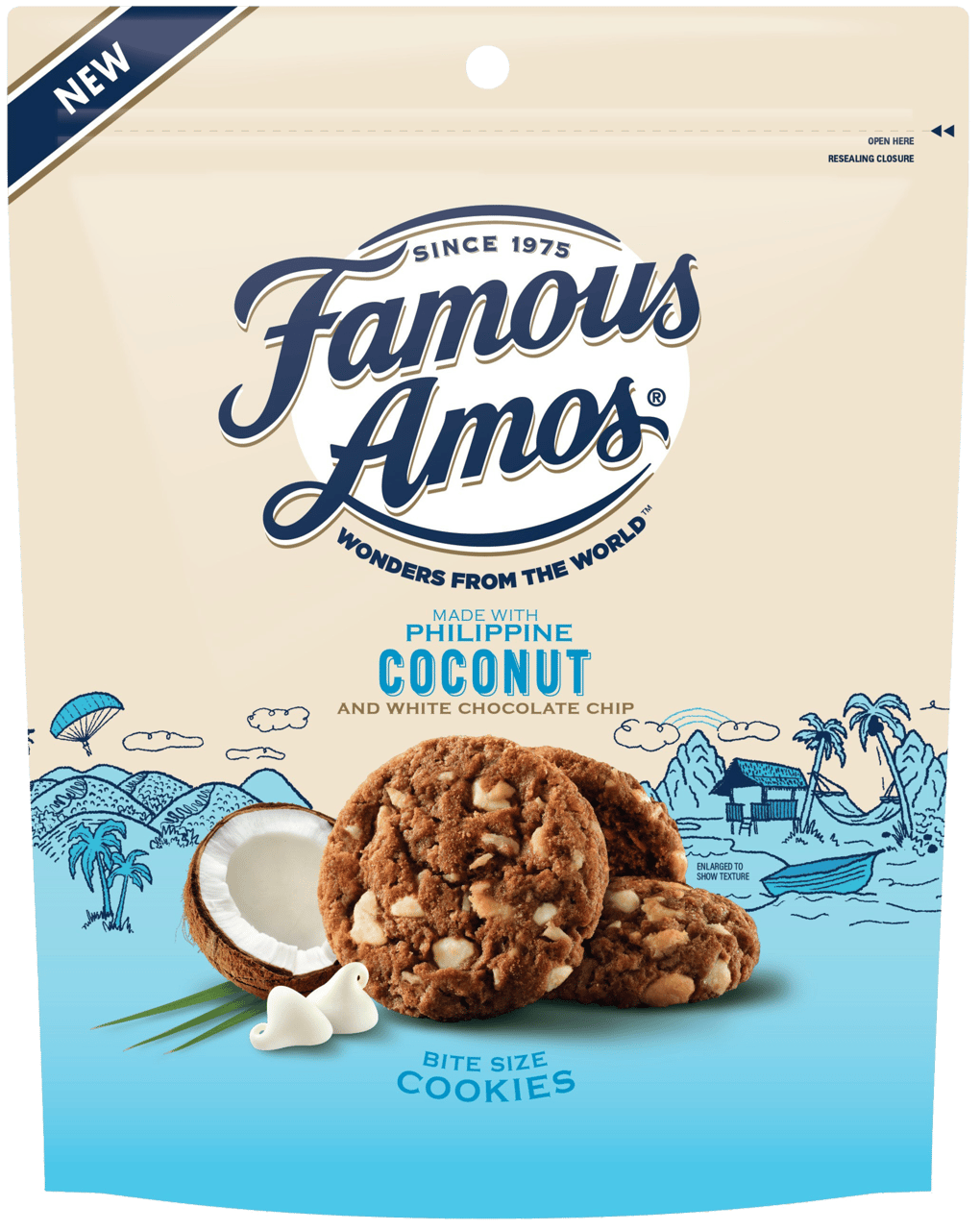Hen of the Woods offers upscale kettle chips for discerning snackers.
Douglas J. Peckenpaugh, Group Editorial Director
Not all potato chips are created equal. And competition among up-and-coming chip brands is fierce in this highly mature retail snack segment valued at $8.9 billion, per IRI, Chicago. In chips, a select few companies and longstanding legacy brands dominate annual sales and market share.
AT A GLANCE
Company: Hen of the Woods Snack Foods
Headquarters: Cincinnati
Product: Potato Chips, Dip Seasonings, Chocolate Bars
Website: www.henofthewoodsotr.com
KEY PERSONNEL
Nick Marckwald, CEO/Founder
Brady DeLong, COO/Sales & Marketing Manager
Jason Dranschak, CFO/Production Manager/Logistics Manager
For companies striving to make their mark in the chip segment, every detail can lead to a potential point of differentiation—especially when a snack company has chefs leading the charge. And it’s through chef-driven flavor where Cincinnati’s Hen of the Woods Snack Foods truly shines—and continues to gain ground in the sales race.
Chef-driven innovations
Hen of the Woods is a chef-led company. “Hen of the Woods originally was going to be a to a restaurant and market concept in Cincinnati,” says Brady DeLong, COO/sales & marketing manager, Hen of the Woods Snack Foods. It was also a way to raise capital. “We started making the kettle chips to provide a little bit of revenue during pre-development days,” he says.

The Hen of the Woods team, from left to right: Brady DeLong, COO/Sales & Marketing Manager; Nick Marckwald, CEO/Founder; Jason Dranschak, CFO/Production Manager/Logistics Manager
The first product from Hen of the Woods was a Red Wine Vinegar kettle chip. But it was too tasty to stand alone. Good ideas like to grow, and one flavor soon became four. “What started off as one flavor for a bar snack at one restaurant quickly changed to four flavors for a friend of ours who was opening a new café concept,” says DeLong. “That first flavor, Red Wine Vinegar, is still our most-popular flavor today.” Hen of the Woods released those first four flavors in 2014.
Today, Hen of the Woods offers a range of six chef-inspired kettle chip flavors, as well as a range of dip seasoning packets designed to make complementary dips for the chips. The company also offers salty-sweet chocolate bars texturized with its crunchy sea salt kettle chips.
“For us, flavor is everything,” says DeLong. “No marketing, no data, no packaging—nothing—can make up for a bad-tasting product. We still develop each one of our flavors in-house. We painstakingly tweak the salt, the acid, the sweetness, the heat, the texture—every aspect—until it’s pretty much perfect in our eyes.”
Nick Marckwald, CEO/founder, is the primary tinkerer at the flavor innovation stage of product development, notes DeLong. He’ll blend a few options in house and provide samples to DeLong and Jason Dranschak, CFO/production manager/logistics manager. Then each member of the team provides independent feedback.
“From there, adjustments are made until we all agree on a formula,” says DeLong.
While Hen of the Woods develops unique takes for its kettle chip flavors, they are still somewhat familiar. “We call our approach, ‘Elevated takes on the classics,’” says DeLong. Some flavors, like barbecue or sour cream, are obligatory and expected. “It’s the culinary depth of the flavors that makes them stand out,” he notes.
The Hen of the Woods Red Wine Vinegar chips, the company’s first commercialized product, set the bar high. Back when DeLong and Marckwald were working in restaurants together, they would slice potatoes into thick, kettle-style chips and soak them in red wine vinegar overnight. The chips would then get a turn in the salad spinner before hitting the fryer. Today, red wine vinegar powder supplants the soak, but the attention to detail in development preserves the flavor.
“It’s very easy to go find a flavor house, walk in, and say you want a spicy, cheesy chip, for example,’ says DeLong. “Then they give you a five different options and you pick one of those five. That’s not how we go about it.”
Hen of the Woods sources all of the raw materials for its products for its own flavor development process. “We do all of our own flavor blending,” says DeLong. “Then we get unseasoned chips from our co-manufacturer and decide on what kind of application percentage we want.”
The flavor testing process involves developing multiple variations, with a range of flavor intensities, acidity, etc., notes DeLong. “We still tweak all of those things internally. Once we internally get to a point where we’re really happy with the flavor and feel like we have a finished product, we then solicit the help of our blending partners.” At that point, the flavor supplier partner helps them scale up the product while maintaining the established gold-standard flavor.
But even once the team has tapped a final solution for a chip flavor, it isn’t etched into stone. Ongoing flavor improvements are part of the process for Hen of the Woods. “Even to this day, we’re still changing flavor blends that we’ve been using for years,” says DeLong. “The only blend that has never changed is the Red Wine Vinegar blend. It just hits that perfect flavor simplicity. It’s our No. 1 flavor.”
DeLong notes that most of the tweaks to the flavor profiles are so minor that the consumer would never notice—but the Hen of the Woods team knows the difference.
The Carolina BBQ flavor is on its 38th iteration, notes DeLong. “We’ve tried 38 different versions of that chip to get to where we are today. We’re still tweaking, we’re always evolving—especially in current times with a supply chain that continues to be challenging,” he says. Dairy, in particular, has proven challenging, for the Buttermilk & Chive and White Cheddar Jalapeño varieties.
The complete flavor lineup at Hen of the Woods currently includes:
- Originality—product format, ingredients, notable traits
- Branding—on-pack messaging
- Packaging—design, sustainability, convenience, user-friendliness
- Organoleptics—aroma, flavor, bite, texture, mouthfeel
AT A GLANCE
Company: Famous Amos
Brand: Famous Amos
Headquarters: Chicago
Product: Cookies
Website: www.famousamos.com
- Buttermilk & Chive
- Carolina BBQ
- Everything Bagel
- Red Wine Vinegar
- Sea Salted
- White Cheddar Jalapeño
The newest flavor is White Cheddar Jalapeño, released in 2020.
The company’s dip spice packets, designed to mix with the consumer’s own sour cream, yogurt, or similar base, include:
- Buffalo Ranch
- Buttermilk Ranch
- Chipotle Ranch
- Everything Bagel
- Jalapeño Cheddar
Hen of the Woods even dips its toe into seasonings for products outside of the snack market with a Bourbon Barrel Smoked Spice Blend, featuring black peppercorns that have been smoked with the bourbon barrel staves from premier Kentucky distilleries.
Two chocolate bars round-out the Hen of the Woods product lineup:
- Sea Salted Milk Chocolate Crunch Bar (36% cocoa)
- Sea Salted Dark Chocolate Crunch Bar (55% cocoa)
Further points of differentiation
Even the new Hen of the Woods packaging for its chips brings uniqueness to the shelf. “Simply put, there’s nothing else like it,” says DeLong. Look around the salty snacks aisle, and you’ll see one product after another that’s a glossy bag with a photo of the product on it, and a buzzword or two on the front of pack, he notes. “To us, having a photo of the product on the bag is like having a photo of the dish on the menu at The French Laundry. It’s unnecessary.”
The packaging redesign started in September 2021 and was unveiled in May. Hen of the Woods worked with fellow Cincinnatians Holotype to develop an updated logo and a unique, two-tone matte and iridescent metallic packaging layout that stands out on the shelf.
“The new packaging is so unique with its metallic look, a two-tone aspect, that’s definitely popping off the shelf,” says DeLong.
The packaging design updates also included increasing the size of the Hen of the Woods logo to make it more memorable and impactful. “We also increased the size of the flavor name, as that’s the unique thing about what’s inside and what separates us—the flavors,” says DeLong.
Distribution strategies
Initially, Hen of the Woods test-marketed its chips at local events. After receiving positive feedback, the team decided to expand.
Today, Hen of the Woods maintains a strong local and regional presence, operating its own direct-store delivery (DSD) route in the greater Cincinnati area. Other paths of distribution travel to various points across the country. But the goal isn’t to reach everyone and anyone.
“At one point in time, we were of the mantra that we should just open doors. We were truly national, with a couple thousand retailers all across the country,” says DeLong. “Since then, we have really reined that in for what we see as more of a regional approach. The majority of our distribution is from the Atlantic seaboard over to the Mississippi.” He notes the strategy is to increase distribution in this expanded region, aiming more for an approach that goes a mile deep before going a mile wide—not necessarily getting into more doors, but garnering more product scans at the checkout.
“We really focus on the strategy of creating more brand awareness in the regions where we have solid saturation,” says DeLong.
Hen of the Woods doesn’t see every store or grocery chain as an ideal fit for the products. “First and foremost, the product needs to fit with the customer base,” says DeLong. “We are a premium product, and while priced competitively, we know from our years of experience that we do the best in areas with younger shoppers, more-adventurous shoppers, and in stores that carry more natural or organic products. And while we are creating our path to becoming coast-to-coast, when it comes to chain group retailers, we are still focused on growing outward from our home region in a sustainable way. So retailers we approach are typically in that footprint.”
Recently, Hen of the Woods has seen a strong growth trajectory through natural supermarket chain Whole Foods Market, notes DeLong.
But the Hen of the Woods distribution strategy looks beyond the grocery store to other channels. The company also seeks to reach consumers at their favorite brewery or lunchtime café—in trusted, intimate settings, notes DeLong. This builds consumer engagement and builds brand fans.
While the Hen of the Woods distribution model is more regionally focused these days, the snack producer does have distribution in almost every U.S. state, notes DeLong.
Online reach is also essential in today’s omnichannel retail environment. “We do some pretty creative things on social media to build our relationship with our independent retailers,” says DeLong. One example is the company’s “spotlights” segments. “Almost every Wednesday, we highlight an independent business that carries our products, and we share a bit about their backstory, what’s important to them and what makes them unique. The point is to showcase the folks out there making it happen, employing their neighbors, and supporting small businesses like ours.”
Community-minded
Hen of the Woods launched its Out of the Woods community initiative earlier this year. It’s comprised of initiatives and projects where Hen of the Woods partners with leaders and nonprofit organizations, locally, regionally, and nationally. Areas of involvement include the local community, climate change and sustainability, and food entrepreneurship support.
“Many companies choose community partners or charity work just for the inherent marketing perks that come along with that,” says DeLong. “What separates us is our unique approach to the fundraising and how we participate in the process.” Out of the Woods allows room for partnering nonprofit organizations to take individualized approaches, including e-commerce campaigns, creating their own branded product, or just a direct donation without any publicity.
“For now, we are looking at organizations that are close to home and serving our own communities,” says DeLong. “We focus on initiatives that are more basic needs, mental health, and children-centric.”
Earlier this year, Out of the Woods partnered with Cincinnati Children’s Hospital, donating 100% of the Hen of the Woods website sales proceeds from the month of February, notes DeLong.
Another initiative involved planting a tree for every online order placed through the website. “We can plant the tree, but we also give the customer the opportunity to plant the tree,” says DeLong. “Due to our proximity to the Appalachian Mountains, we have focused on planting in that region.”
Out of the Woods also gives back to the industry by supporting emerging entrepreneurs. “This is actually how Out of the Woods was born,” says DeLong. “When we first started our transition from chefs to CPG operators, we had no clue what we were doing, where we were going, and who would help us. We were living in a silo for years, and it was very challenging. While today there are definitely more resources for budding food entrepreneurs, there still isn’t much of a network or resources in our home region of Cincinnati.” However, he notes Out of the Woods has identified a few great organizations as partners, with news on those opportunities coming in the near future.
“Ultimately, we want help folks wherever and whenever we can,” says DeLong. “Making it in this industry is incredibly challenging, and many of the early pitfalls are avoidable if you have someone to call and to talk to who’s been there and done that. I love talking with people in the early stages and sharing tips, systems, processes, trade secrets, etc. I’d love to have a toolbox built that anyone can download and use.”
Recent learnings
“We learned a lot during the pandemic,” says DeLong. “Much of what we learned was what we could go without and what was really important to us. We learned how resilient our small business partners were, and when they all came back swinging, we were right there, ready to provide them with amazing products and service. We saw some of our best growth during the pandemic, but in different places than most companies.”
DeLong notes many CPG brands doubled down on e-commerce and offered one-time deals and promotions in big box retailers. Hen of the Woods took a slightly different approach. “We focused on making our products easily accessible for small independent businesses. With those businesses, you build relationships, you stick around, and you stand out. We also expanded our e-commerce offerings simply to meet the customer where they were at the time.” However, he notes that as the shift has gone back to brick-and-mortar retail for grocery purchases, the company scaled back that approach.
If you have a great product and offer a great wholesale customer experience, the right businesses will find you organically and by word of mouth, suggests DeLong. “Our calculated approach is working and it’s profitable, so we’re sticking with the model.” SF&WB







